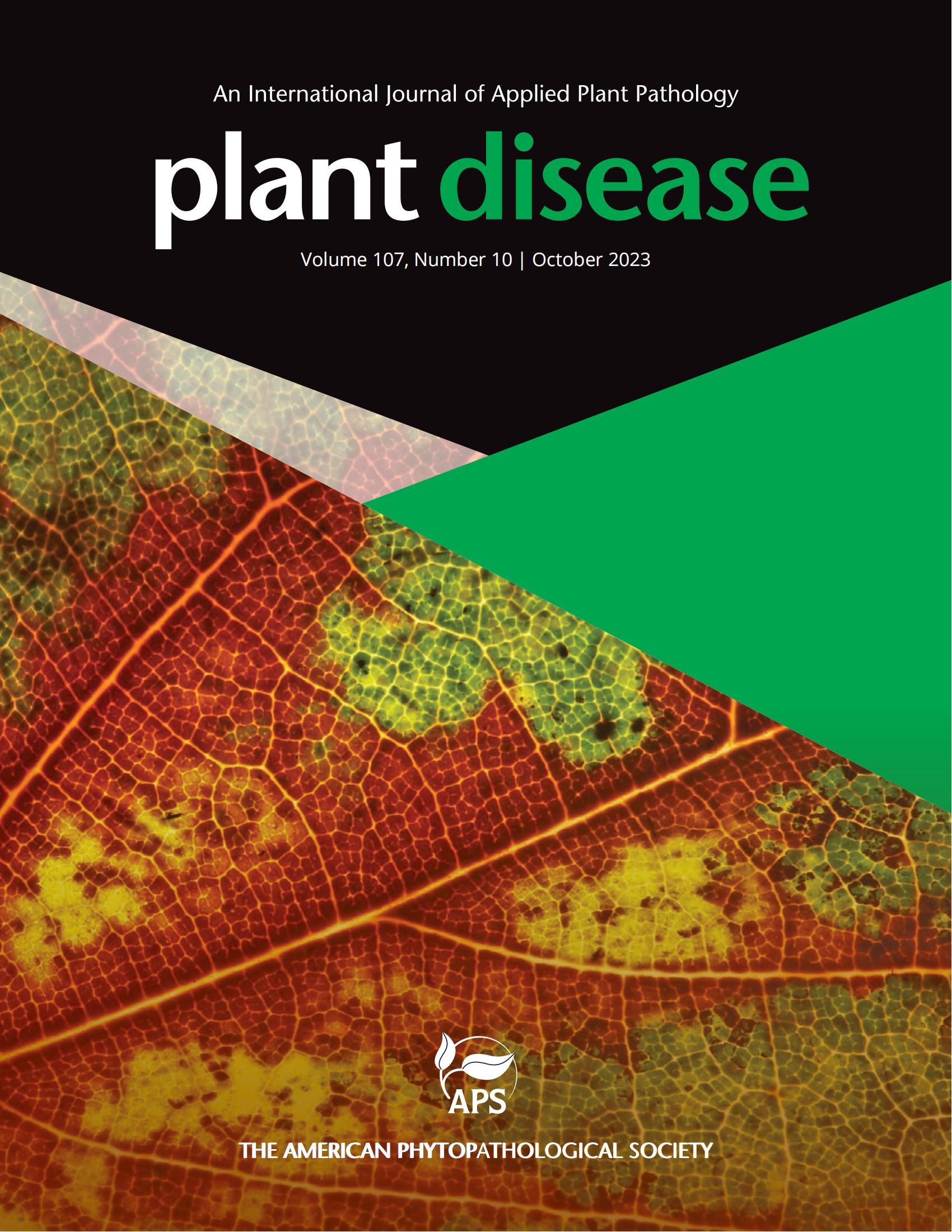斯洛文尼亚首次发现土壤传播的谷物花叶病毒(SBCMV)感染小麦。
摘要
斯洛文尼亚对土壤传播的谷物病毒的存在进行了充分的研究,因此我们进行了一项小型调查,作为Euphresco Cerevir项目(2021-A-374)的一部分。2022年至2024年在斯洛文尼亚中部和东北部收集了显示病毒样症状的大麦(Hordeum vulgare)和小麦(Triticum aestivum)样本。观察到的症状包括黄色条纹和马赛克图案,叶尖变黄或变红。根据生产商说明(DSMZ/Bioreba),采用双抗体夹心酶联免疫吸附试验(fas -ELISA)检测大麦和谷物黄矮病毒(BYDVs和CYDVs)、小麦矮病毒(WDV)、大麦轻度花叶病毒(BaMMV)、大麦黄花叶病毒(BaYMV)、土壤传播的谷物花叶病毒(SBCMV)、土壤传播的小麦花叶病毒(SBWMV)、小麦纺锤纹花叶病毒(WSSMV)、大麦条纹花叶病毒(BSMV)和小麦条纹花叶病毒(WSMV)。在研究期间收集的70个样本中,斯洛文尼亚中部的3个小麦样本检测出SBCMV阳性。检出的其他病毒有BYDVs、CYDVs和WDV。为了确认SBCMV的DAS-ELISA结果,使用MagMAX-96总RNA分离试剂盒和植物RNA分离辅助(均由Thermo Fischer Scientific)从所有样品中提取总RNA,并根据制造商的说明使用高容量cDNA反转录试剂盒(Thermo Fischer Scientific)进行反转录。采用Marra等人(2023)描述的qPCR检测SBCMV。仅3份das - elisa阳性样品经该方法证实为阳性。SBCMV在易感冬小麦品种中造成高达50%的产量损失(Clover et al. 1999),在感染硬粒小麦时甚至造成70%的产量损失(Vallega and Rubies Autonell 1985)。它已经在小麦、黑麦及其杂交小黑麦中被发现,并在不同的国家报告,包括英国、法国、德国、丹麦、意大利和波兰(Budge et al. 2008)。结果表明,该病毒在斯洛文尼亚生产田中丰度较低。据我们所知,这是斯洛文尼亚谷物中检测到SBCMV的第一份报告。SBCMV的谷粒多粘菌病媒在欧洲广泛传播(Kanyuka et al. 2003);然而,在斯洛文尼亚没有它存在的记录。需要进一步研究禾草单孢杆菌在斯洛文尼亚的存在和分布,以评估这一发现对斯洛文尼亚小麦生产的重要性。The presence of soil-borne cereal viruses in Slovenia is understudied, therefore we conducted a small survey as part of Euphresco project Cerevir (2021-A-374). Barley (Hordeum vulgare) and wheat (Triticum aestivum) samples showing virus-like symptoms were collected in the years 2022 to 2024 in central and north-eastern Slovenia. The observed symptoms included yellow streaks and mosaic patterns, yellowing or reddening of the leaf tips. All collected samples were tested by double antibody sandwich ELISA (DAS-ELISA) for barley and cereal yellow dwarf viruses (BYDVs and CYDVs), wheat dwarf virus (WDV), barley mild mosaic virus (BaMMV), barley yellow mosaic virus (BaYMV), soil-borne cereal mosaic virus (SBCMV), soil-borne wheat mosaic virus (SBWMV), wheat spindle streak mosaic virus (WSSMV), barley stripe mosaic virus (BSMV) and wheat streak mosaic virus (WSMV), according to manufacturer's instructions (DSMZ/Bioreba). From 70 samples collected during the study period, three wheat samples from central Slovenia tested positive for SBCMV. Other viruses sporadically detected in tested samples were BYDVs, CYDVs and WDV. To confirm the DAS-ELISA results for SBCMV, total RNA was extracted from all samples using MagMAX-96 Total RNA Isolation Kit supplemented with Plant RNA Isolation Aid (both by Thermo Fischer Scientific) and reverse transcribed using High-Capacity cDNA Reverse Transcription Kit (Thermo Fischer Scientific) according to manufacturer's instructions. SBCMV was detected using qPCR described by Marra et al. (2023). Only the three DAS-ELISA-positive samples were confirmed to be positive by this method. SBCMV was shown to cause significant yield losses by up to 50% in susceptible winter wheat cultivars (Clover et al. 1999) and even by 70% when infecting durum wheat (Vallega and Rubies Autonell 1985). It was already identified in wheat, rye and their hybrid triticale, and reported from different countries, including UK, France, Germany, Denmark, Italy and Poland (Budge et al. 2008). The results indicate low abundance of the virus in Slovenian production fields. To the best of our knowledge, this is the first report of SBCMV detection in cereals in Slovenia. Polymyxa graminis vector of SBCMV is widespread in Europe (Kanyuka et al. 2003); however there are no records of its presence in Slovenia. Further studies on the presence and distribution of P. graminis in Slovenia are needed to evaluate the importance of this finding for Slovenian wheat production.

 求助内容:
求助内容: 应助结果提醒方式:
应助结果提醒方式:


